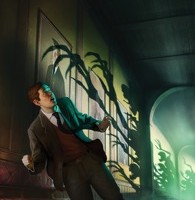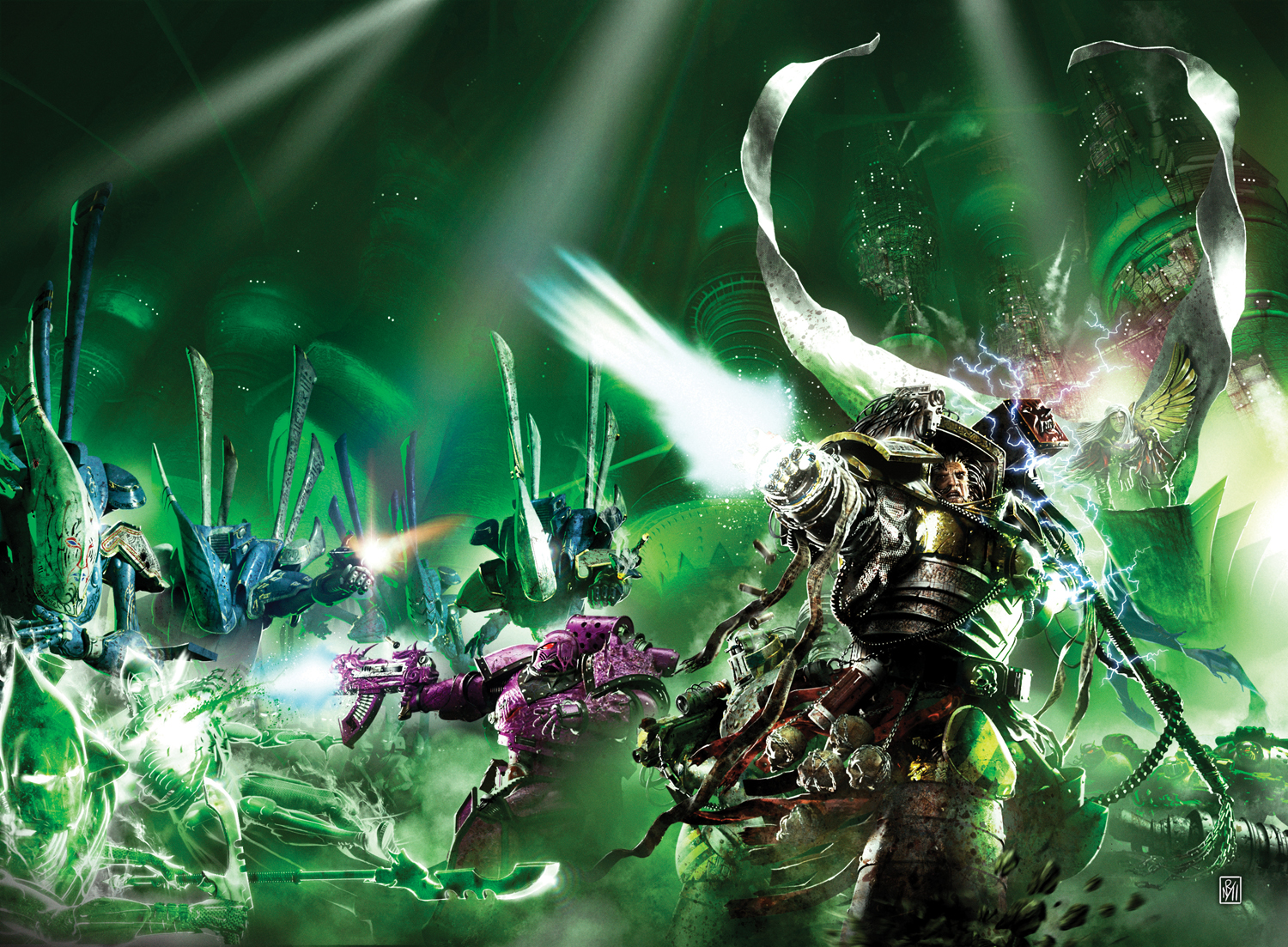
Something dark sleeps deep in the ocean, emanating a power darker and more destructive than anything imaginable. And there are those that would wish to wake it… Following the mysterious deaths of several young ladies, a wide cast of familiar faces from the Arkham Horror board game begin an exciting and terrifying new investigation. Ghouls of the Miskatonicbegins a thrilling story in the renowned setting created by H.P. Lovecraft. Fans of games and literature alike will be immersed in the frightening secrets that lie beneath The Dark Waters.
Writer’s Commentary
There’s a moment I’m sure every writer dreams about; the moment they finally get to write the one thing they’ve always wanted to write. For some of us, that moment comes several times, and I’ve been lucky enough to put pen to paper on novels that have, literally, had me jumping around with excitement at being asked to write them. One such moment was when, through a series of strange quirks of fate that are too blasphemously horrific to go into here, I was asked by Fantasy Flight Games if I’d like to have a crack at working on a novel for them. More precisely, working on a trilogy of novels based on the Arkham Horror board game…
When you’ve been a fan of Lovecraft and Arkham Horror for as long as I have, it doesn’t take long to say yes. Getting to write stories in witch-haunted, gambrel-roofed Arkham and actually use the creatures and characters of the mythos was just about the most exciting opportunity I’d ever been offered. I’ve worked the essence of the mythos into a lot of the books I’ve written over the years, but this was a chance to use the real thing, to tell a story where I could actually type the word Cthulhu. It’s been a while since I finished Dweller in the Deep, the last novel in the Dark Waters trilogy, though Ghouls of the Miskatonic is as fresh in my mind as a shiny Mi-Go brain jar.
When you’re starting any novel, it’s always a good idea to have some thoughts as to what you want to achieve along the way. So before I even blew the dust of ages from the cover of my Necronomicon, I sat down to ponder what these novels needed to do. My first aim was to tell a story that moved at a brisk pace, one that took you by the throat and didn’t loosen its clawed grip until the last page (and even then, you’d be dragged screaming into the next one…). All too often horror stories spend so much time on building atmosphere that the plot gets lost along the way. That wouldn’t happen with Ghouls. It wouldn’t skimp on atmosphere, but nor would it get bogged down in swathes of needless description just for the sake of it. The plot would kick off quickly, and would be like a shark, always moving forward, and always with the scent of blood in its nostrils. Through the evolution of the story there was going to be an opportunity to explore the character of Arkaham, a fleeting chance to get into its hidden nooks and crannies where all the really juicy stories lurk.
The next thing I wanted was to have a wide-ranging cast of characters who inhabited a shared universe. I wanted this tale to be recognisable as the world in which characters like Finn Edwards could share the page with ones from Lovecraft or my own invention, and feel like they were all part of one cohesive world. This would be a great way to expand on their back-stories and see how they developed from their origins as presented on their character cards. Yes, Rex Murphy is a cursed, unlucky reporter, but what does that mean in terms of the story? That can’t be all he is, or else his character will quickly become uninteresting in the context of a novel. I wanted these characters to grow and develop, so that the Rex we meet at the end of the story is a far cry from the one we saw at the beginning.
I knew that there had to be some correlation between the game and the story. Normally this is something I avoid, as the moment you realise you’re reading a book based on a game, your immersion within the world is shattered. Whenever I’m writing tie-in fiction, I write with the assumption that there is no game. It’s a real, living, breathing world I’m writing about, whether it’s one populated by wizards and dragons, sci-fi super soldiers and evil aliens, or bootleggers, flappers and professors of ancient languages. This book was just the same, but there’s one crucial difference between Arkham Horror and Lovecraft’s vision of the bleak, empty horror of Earth’s inevitable doom. In Arkham Horror, you can fight the monsters. With a bit of pluck, a whole lot of gumption and a hefty dollop of lore, you might just be able to hold the darkness at bay for a time. It’s only a temporary reprieve, but it’s a reprieve nonetheless. I worked some of Arkham Horror’s mechanics into the plot, using them in a way that players of the game would recognise, but which didn’t leap out at the reader as something artificially shoehorned into the plot. That way I kept the Lovecraftian horror, but leavened it with the tiniest morsel of hope that there might be some way to stave off disaster.
I did plenty of research on the twenties, so we were going to see that tumultuous decade in all its glitzy, fashionable, monstrous glory. All filtered through the distorting prism of Arkham, of course, a town that’s as haunted by its past as it is threatened by the future. I wanted the reader to really feel the vibe of the twenties, the colour and the burgeoning optimism of a nation that hadn’t long come out of a nightmarish war. We’d go from vagrants in the railroad yards, the smoky depths of a speakeasy to the paranoid dealings of bootleggers in the woods. That setting would be the jumping off point for the novel, a place where the spirit of the times could be horribly contrasted with the dreadful monsters lurking in the shadows.
It’s a big change going from novels where the heroes can pull out a heavy gun and blow the monsters apart with a single high-explosive shell or smash their skull with a magic hammer to ones where the very sight of a creature could drive you insane. I wanted the creatures of the mythos to be horrific, unimaginable and defy understanding. But at the same time the characters had to be capable of fighting them at some point. I looked at this part of the trilogy as the ‘running away’ part; the novel where people are first confronted by the mythos and simply cannot understand it. As readers of Lovecraft and players of Arkham Horror, we know what a Night Gaunt or a Shoggoth is, but the characters in the book don’t. They can’t look at the back of a monster token and see if they stand a chance of fighting it, they’re staring at something that looks like their worst nightmare made flesh! I wanted to capture that sense of the unknown, where even the ‘minor’ creatures were so terrifying that it felt real and terrifying to the reader as well as the characters.
Ghouls of the Miskatonicwas a tremendously enjoyable experience, which might sound odd considering it’s ostensibly about the end of the world as we know it. But when you’re getting to write blasphemous mysteries alongside the colourful slang of the twenties, bloody horror alongside cosmological infinities, you know you’re on to a winner.
If you fancy risking your sanity after reading this, click on the link below…you have been warned.
Arkham Horror: Ghouls of the Miskatonic (The Dark Waters Trilogy)
